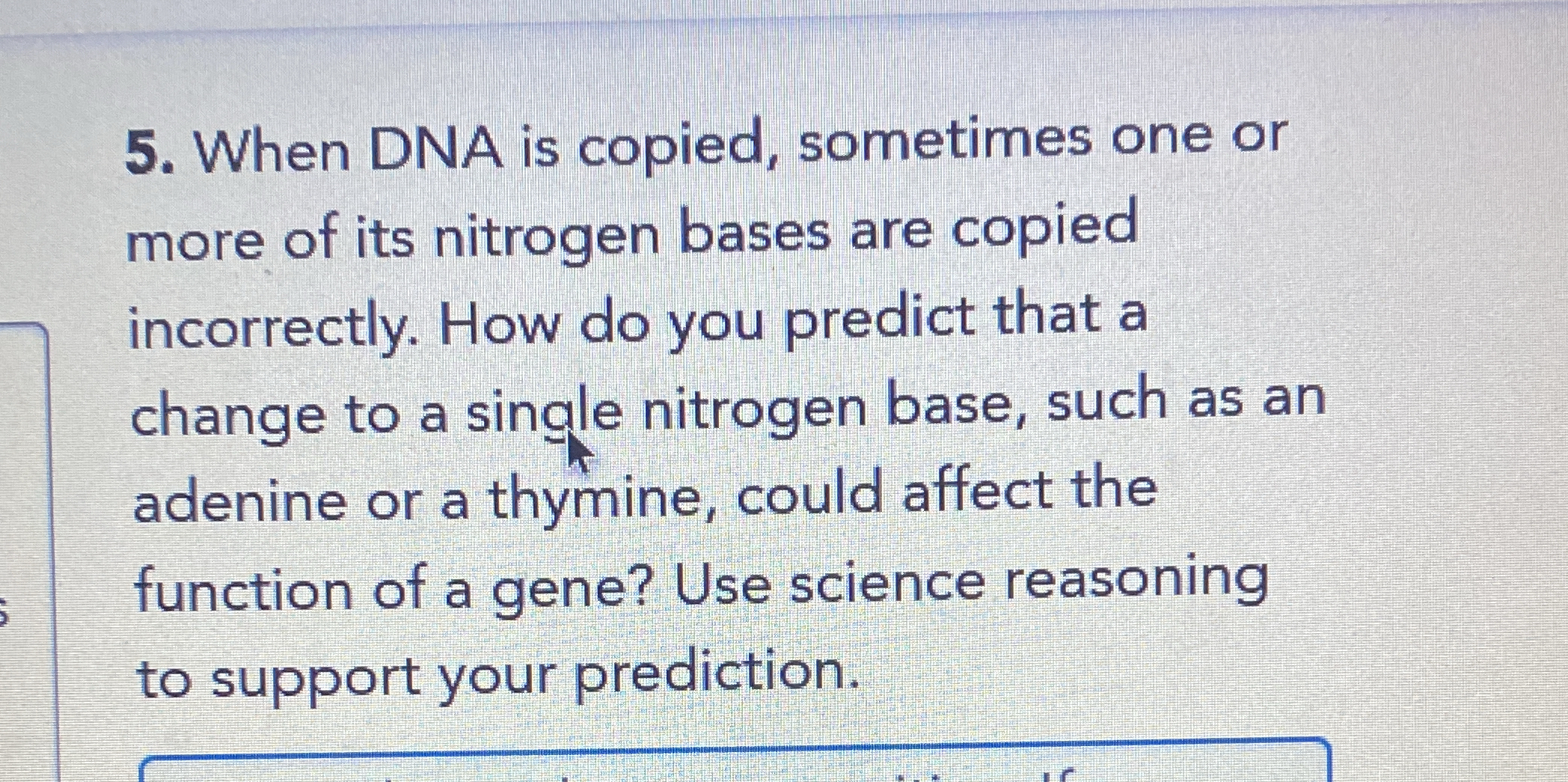When DNA is copied, sometimes one or more of its nitrogen bases are copied incorrectly. How do you predict that a change to a single nitrogen base, such as an adenine or a thymine,... When DNA is copied, sometimes one or more of its nitrogen bases are copied incorrectly. How do you predict that a change to a single nitrogen base, such as an adenine or a thymine, could affect the function of a gene? Use science reasoning to support your prediction.

Understand the Problem
The question explores the potential consequences of errors during DNA replication, specifically focusing on how a change to a single nitrogen base (like adenine or thymine) can influence gene function. It asks you to use scientific reasoning to predict and explain the effects of such a change.
Answer
A change in a single nitrogen base can alter the mRNA sequence, potentially changing the protein's structure and function.
A change in a single nitrogen base, known as a point mutation, can alter the sequence of mRNA during transcription. This can lead to a different amino acid being added during protein synthesis, potentially changing the protein's structure and function. The impact can range from no noticeable effect to a complete loss of function.
Answer for screen readers
A change in a single nitrogen base, known as a point mutation, can alter the sequence of mRNA during transcription. This can lead to a different amino acid being added during protein synthesis, potentially changing the protein's structure and function. The impact can range from no noticeable effect to a complete loss of function.
More Information
A point mutation is a change in a single nucleotide base in DNA. These mutations can have a variety of effects on gene function, depending on the specific change and its location within the gene.
Tips
Students commonly think that a change in a single base will always have a significant effect, failing to consider that some mutations are silent and the redundancy in the genetic code.
Sources
AI-generated content may contain errors. Please verify critical information